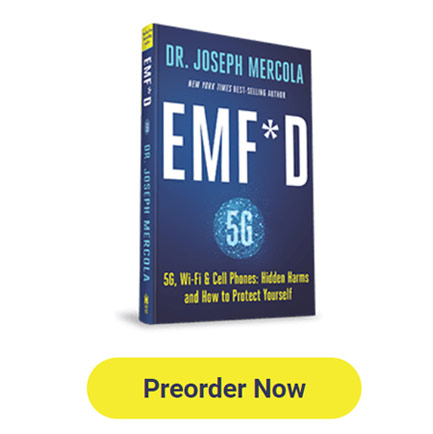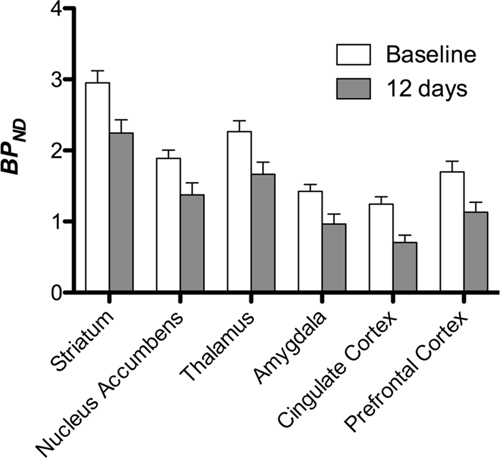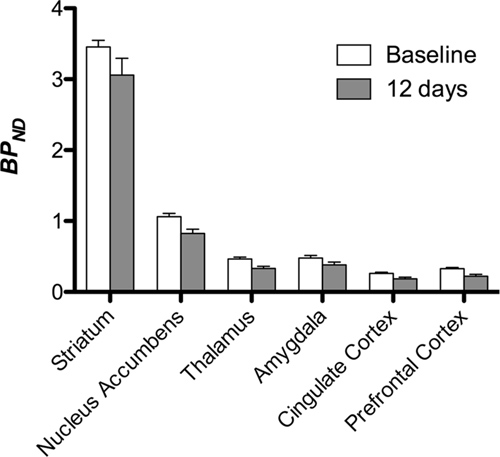The War Against 5G Heats Up
In the December 2019 interview, "Irregulators vs. FCC: Exposing and Prosecuting a Vast, Illegal Financial Scandal in Telecommunications,"1 Josh del Sol — who directed the documentary films "Take Back Your Power" (a film detailing the dangers of smart meters) and "InPower Episode 1: A Mass Action of Liability" (which reveals how you can refuse smart meters) — talks to Bruce Kushnick and W. Scott McCollough, Esq. about their lawsuit against the Federal Communications Commission (FCC).
Vast Corruption Uncovered
Kushnick, a telecom analyst, and attorney McCollough, a former Texas assistant attorney general, are part of a group called The Irregulators, which has exposed a vast and illegal financial scandal in the telecommunications industry. Kushnick and McCollough are spearheading the organization's lawsuit against the FCC. As noted on del Sol's website:2
"[Kushnick and McCollough are] leading experts in the telecom industry who have mapped a pathway to restore the Internet to the human-friendly, benevolent ideals from which it started. As part of this redirection, they're not afraid to call out the corruption of those who have hijacked it.
Bruce and Scott lead the IRREGULATORS,3 a group of telecom industry experts and insiders who are taking the FCC to federal court in January [17], 2020, armed with evidence — of an estimated $1 trillion scandal — and strategy that could very well pave the way to a great restructuring of telecom and dissolution of the 5G agenda."
Disrupting the Funding That Drives 5G Deployment
As explained by McCollough, the aim of the lawsuit is to get the FCC "to recognize the fact that basic telephone rate payers — wire line customers — have been funding deployment of wireless in general, and now 5G in particular, through their basic phone bills."
If the prosecution is successful, the FCC will either have to eliminate this illegal subsidy to the wireless industry, or "step aside and allow individual states decide whether they want to do so," McCollough says. Nationwide, this redirection of funds amounts to about $1 trillion over the past 15 years, and without this money, 5G would not have been possible.
Were the wireless industry forced to pay its fair share of construction and maintenance, local (i.e., wired) phone rates would go down while the cost to wireless providers would rise, as they'd have to pay far more for the fiber optic cables needed to continue the expansion and advancement of wireless, thus making 5G uneconomical as a consumer product.
In other words, this lawsuit has the potential to alter the telecommunications industry from the ground up. As noted by McCollough, the lawsuit "is a knife in the heart of the economics that currently drive 5G … 5G cannot sustain itself on an economic basis if it has to pay its own way."
The full story behind the lawsuit is detailed in Kushnick's book, "The Book of Broken Promises: $400 Billion Broadband Scandal & Free the Net," available on Amazon4 in paperback and Kindle. A free PDF version of the book is also available for download.5
In his book, Kushnick breaks down what state utilities are, the history of telecommunications and how we've gotten to this point with advanced wireless and 5G. It's fodder and ammunition for anyone wanting to help stop the implementation of 5G and redirect us back to the far safer alternative of fiber optic broadband.
Broken Promises
In the interview, Kushnick explains how wired customers ended up paying for our wireless infrastructure. The telephone wires that telephone companies use to provide service are part of a state utility.
These copper wires were installed across the U.S. starting in the 1930s until the 1970s, so that no matter where you went in the U.S., there was a phone available. Ma Bell owned most of the state utilities until 1984, when its monopoly was broken up into regional Bell companies.
In 1992, Vice President Al Gore campaigned on a promise that everyone in America would have fiber optic wire through their home and office by 2010. State utilities agreed to set aside a small amount from each customer's bill to fund the nationwide conversion to fiber optics.
However, by 2000, virtually none of the fiber optic wiring had been done. As noted by Kushnick, "they basically pocketed the money." By the end of 2000, California alone was supposed to have 5.5 million households finished, at a projected cost of $16 billion.
In 1998-1999, the FCC started tracking broadband, but they left out the states' financial commitments. In other words, Kushnick says, they covered up the fact that state utilities had collected money for the implementation of fiber optics that was never actually done.
According to Kushnick, between 1993 and 2004 alone, state utilities overcharged customers a total of $200 billion for fiber optics wiring that was promised but never installed. As noted by McCollough:
"We had a bait and switch. We paid for a bunch of fiber to the home, and now we're getting 5G instead. We started this accounting thing not because we wanted to kill 5G, but because it was the right thing to do, once we figured out how badly local and intra-state wireline ratepayers were getting screwed."
An Even Bigger Accounting Scandal
But this is only half of the scandal. The Irregulators discovered an even bigger fraud. Financial documents obtained from Verizon New York (New York's official telecom utility), reveal wireless service providers are stealing funds from wireline rate payers to the tune of $60 billion per year in New York alone, and FCC rules are what allow for this theft.
In a simplified nutshell, the FCC froze its cost-accounting rules in 2000, and by so doing, allowed telecom companies to manipulate their books in such a way that local service revenues (i.e., monies collected for wired phone services) could be allocated to pay for the buildout of wireless infrastructure.
For example, the expenses telecoms paid in 2019 were based on the same expense percentage as in 2000. Twenty years ago, local service, meaning the wired phone service, provided a majority of the revenue and paid a majority (65%) of the expenses, such as construction and maintenance.
In 2019, Verizon New York's local service accounted for a mere 21% of the utility's revenue, yet still accounted for more than 60% of the company's expenses.
The FCC's policies, Kushnick and McCollough explain, have created and allowed for a cross-subsidy practice in which wireless services are being paid for by wireline customers, while wireless companies are paying only a fraction of the expenses they incur.
What's more, McCollough points out that whatever fiber optic wiring was in fact deployed is now being repurposed for wireless services. So, in that sense, the two fraud scenarios are interrelated.
What this has all led to is that, on the books, wired telephone service appears to be very expensive and unprofitable when, in reality, wireless is less expensive simply because it's been illegally subsidized.
If wireless companies were no longer allowed a free ride, there would be billions of dollars available in each state, each year, to install broadband fiber optics, which would eliminate the need for wireless 5G.
Now, the reason all of this corruption and fraud has been allowed to occur is because the FCC is a captured agency — and has been for decades, McCollough says. The wireless industry has taken over the very agency that is supposed to regulate and oversee it, and without oversight, the foxes have raided the henhouse.
For more details, see Irregulators.org,6 where you can find an audio recording of McCullough's January 17, 2020, oral arguments before the DC Circuit Court of Appeals. If you'd like to make a donation to help fund this legal fight, you'll find a link to that at the top of the page as well.
The Way Forward: Taking Back Our Utilities
McCollough and Kushnick are optimistic about our ability to block 5G. In the interview, they sum up how, by teaming up with our local officials, residents in all states can fight back by demanding their state telecom utility return the misappropriated funds and allocate them back into broadband fiber optics.
"All these officials hear … is news coming down from the top, and from the feds, and from industry, [saying], 'There is nothing you can do. Your hands are tied. We have tied your hands,'" McCollough says.
"Well your hands are not tied. I mean, there may be a piece of string around one of your fingers. Yes, you have a finger that is tied — but you've still got nine other fingers! They [local officials] may not be able to stop the tower… but they can stop the fiber that goes to the tower."
The key goal, and the answer to the 5G dilemma, McCollough points out, is to upgrade to fiber optic wiring across the nation. It's not only fast, but also far safer, from a health standpoint, than wireless. And, as noted by Irregulators.org, 5G still requires fiber optic wiring, so why not just stop there?
Fiber optics is certainly safer than 5G — and we already paid for it. It's time we demand our state utilities return the stolen money and make good on their promise to bring fiber optics into every home and office. As noted on Irregulators.org:7
"5G is the newest in a long line of tech services that are supposed to change our lives for the better. But this service has a range of a few city blocks, requires a fiber optic wire, and there are health concerns with small cell antennas too close to homes.
Truth is, 5G is really designed to get rid of the wired regulations and obligations, and have wireline phone customers pay — cross-subsidize, the wireless companies' business."
We've Been 'EMF*D'
Over the past decade, I've written many articles discussing the evidence of biological harm from nonionizing electromagnetic field (EMF) radiation, which I believe is one of the greatest challenges to public health facing us today. For a refresher, see my previous article, "Reduce EMF Exposure."
For a recap on the additional hazards brought on by 5G, see "5G Apocalypse: The Extinction Event," which features a documentary by the same name, or "Scientific American Warns: 5G Is Unsafe."
My new book, "EMF*D," is an attempt to inform you about the hidden harms of EMF and what you need to do to protect yourself and those you love. I also reveal the reasons why you've been left in the dark about this serious health threat. In it, you'll learn:
- How EMFs are impacting your body and mind
- Where you can find them in your daily life
- How they can cause disease and speed up aging
- How to repair the damage done by EMFs at the cellular level
- Practical strategies to protect yourself and your loved ones from EMFs

>>>>> Click Here <<<<<
from Articles https://ift.tt/3b0kSB1
via IFTTT


